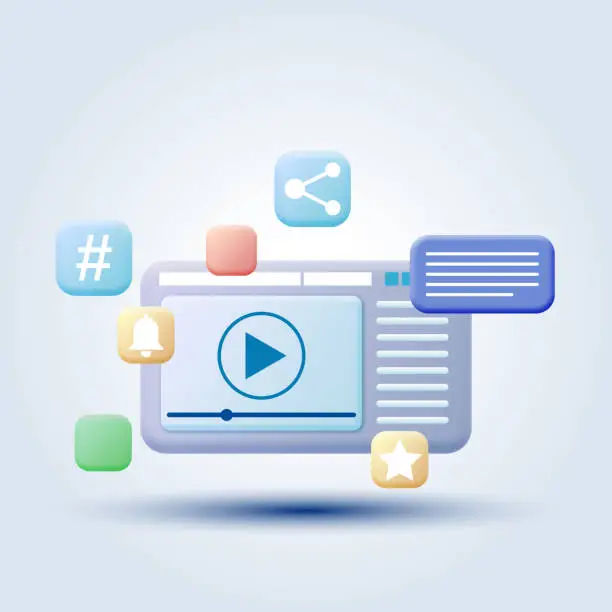Audio Transcription 101: Definition, Types, and Best Practices
Have you never wasted a half-hour in cleaning through an engagement book, searching through hundreds of passages in search of one sentence which you dimly recall? In an environment of podcasts, webinars, and video calls, hours of verbal communication are often a treasure trove of useful information. The change of audio transcription alters that. It allows speech to be converted to text, thus making information searchable, shareable and easy to reuse. Transcription has gradually become a basic digital skill through enhancing accessibility, accelerating research or content creation. Through the article, we will unravel the mystery that is transcription, the various types that are available, how it is done, and how it is being transformed by modern AI systems such as Vocalsync in a better way.
What is Audio Transcription?
In essence, audio transcription involves a written copying of the verbal language in an audio or video recording. An effective transcription does not just capture words only but also the context and tone used and the natural flow of speech.
Professional transcription often includes speaker identification, time-stamping, and even notations for non-verbal sounds like [laughter] or [phone ringing]. These details make the transcript richer and more useful—especially for research, accessibility, and media production.

The value of transcription lies in its versatility:
- Searchability: Once audio becomes text, you can instantly search for names, topics, or phrases instead of scanning through hours of recording.
- Accessibility: The text in written form will cater to the needs of the deaf or the hard hearing individuals and will aid in the multilingual understanding by translating the text.
- Content Reuse: Blogs, articles, snippets on social media or even eBooks can be based on the transcripts.
To be more precise, transcription is the act of converting short-lived discussions into reusable knowledge that is structured. It helps fill the gap between verbal and written communication where audio content is given a second life in the form of a text.
Types
Not all transcriptions are the same. Depending on your needs—accuracy, turnaround time, and budget—there are three main types of audio transcription. Each comes with its own strengths and trade-offs.
Here’s a quick comparison that summarizes the main differences between methods:
| Feature | Manual Transcription | Automated Tools (AI) | Human-Assisted Hybrid |
| Accuracy | Very High (98–99%) | Moderate (80–90%) | High (95–98%) |
| Turnaround Time | Slow (Hours–Days) | Very Fast (Minutes) | Fast (1–3 Hours) |
| Cost | Higher | Low | Moderate |
| Context Understanding | Excellent | Limited | Good |
| Best For | Legal, Academic, Formal | Internal Use, Notes | Business, Media, Content |
Applications
Audio transcription isn’t confined to one industry—it’s everywhere. From content creators to researchers, countless professionals rely on it to make sense of spoken data.
Here are some of the most common and impactful uses:
- Media and Content creation: You can add transcripts to videos or podcasts easily, which enhances the engagement of the viewer and the impact of the SEO. They also enable creators to use voice recordings as blog posts or social media captions.
- Business and Legal Fields: Responsible and accurate meeting notes, interview logs and legal transcripts guarantee clarity and responsibility. Text records form irrefutable evidence and a source of reference to work on a case in law.
- Academic and Research Work: The researcher and students who transcribe focus groups, interviews and lectures analyze the themes, find patterns and quote correctly in the publication.
- Healthcare Documentation: Physicians and clinicians dictate patient notes and conserve time and enhance the quality of medical records through transcription.
- Personal Use: Juncture to transcription is used by individuals to journal, take notes on classes or even to jot down their creative ideas or ideas- converting a spontaneous idea into a well-structured text.
In essence, transcription extends the lifespan of spoken information. It turns what was once fleeting into something permanent, shareable, and easy to manage.
How Does Audio Transcription Work?
Whether it’s done by a professional transcriber or an AI program, transcription follows a similar general process. Each stage contributes to ensuring the final text is clear, complete, and faithful to the original recording.

Step 1: Preparation and Pre-processing
It starts with the preparation of audio. This includes verification of the sound quality, elimination of background noise and speech clarification. In the manual transcription, to ensure consistency, a list of terms such as the technical jargon or names can be provided so that the transcriber will not miss any words.
Step 2: Transcribing the Audio
This is the core step. During manual transcription, an individual listens attentively and writes down what he or she hears and then rereads or rereads where necessary. In computer-controlled systems, AI programs scan sound waves, identify words and render text nearly as quickly as possible.
Step 3: Reviewing and Editing
The text passes through review phase after transcription. Spelling mistakes, misunderstood words and phrases and ambiguity are amended. In the business services, the editors also highlight the speaker labels and timestamps to read easier.
Step 4: Formatting and Delivery
Lastly, the text is styled as per the requirements of the client, plain text or Word files or time-coded subtitle files such as SRT or VTT.
With the changing technology, the difference between the human and machine transcription is becoming smaller. With the advent of AI, the process has changed completely: it has become more accessible and quicker. Then there is Vocalsync, a new AI-based transcription software that is an ideal example of how AI is changing this workflow.
Vocalsync: AI Making Transcription More Efficient
Vocalsync is a state-of-the-art text-to-speech transcription and subtitle creator, which is engineered to enable users to quickly, precisely, and easily convert speech into text. It simplifies the whole process that includes the process of speech recognition to making properly timed subtitles, enabling creators, professionals, and teams to concentrate on their work rather than transcription.
Here’s what makes Vocalsync stand out:
- High-precision transcription: Allows using multiple languages and accents and differentiating between speakers to produce the text in a clear and consistent way.
- Single-Click subtitle editing: Detects and automatically creates time-coded subtitle files, including SRT and VTT, which are perfectly synchronized to your video timeline.
- Easy-to-use editing tool: Provides easy workspace to review, correct and format transcripts or subtitles- with no additional software required.
- Other intelligent applications: Advanced capabilities such as content summarization, defining keywords, and time management assist in managing and re-using content even more easily.
Vocalsync saves many hours in transcription time and ensures an equivalent transcription readability by automatically automating repetitive procedures and simplifying the process of document editing. To any film or recording professional who either deals a lot with audio or video, it is not only a convenience, it is a productive means of working faster and with better output.
Conclsuion
Audio transcription has become a necessary component of the method we use to record and utilize information. It is a translation between the spoken and written communication, and it assists us to structure our thoughts, exchange knowledge, and make it easier to be accessible to all. Tools that are run with the aid of AI can find dozens of hours of manual labor that can now be handled within minutes.
It is not a change to a future where a human does not work, instead it is a process where AI aids people by creating smoother, faster, and more accurate transcription. With the ever-growing advancements in the field of technology, the accuracy and the cost of transcription will only increase. If you haven’t tried it yet, tools like Vocalsync are a great way to experience how much easier managing audio.
